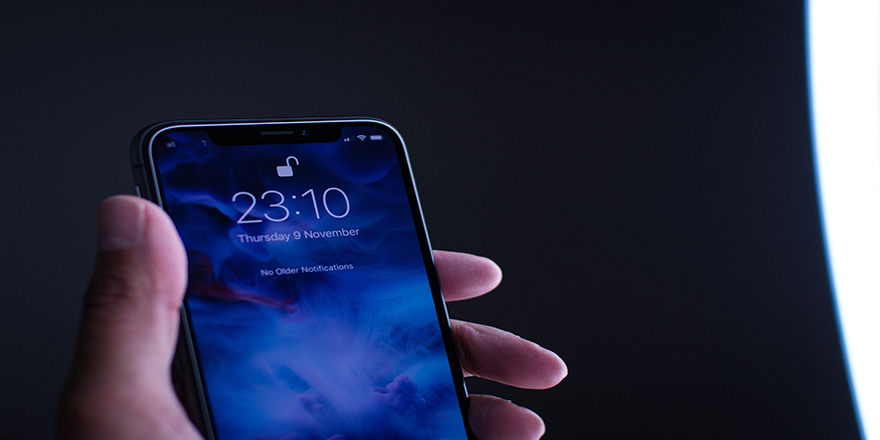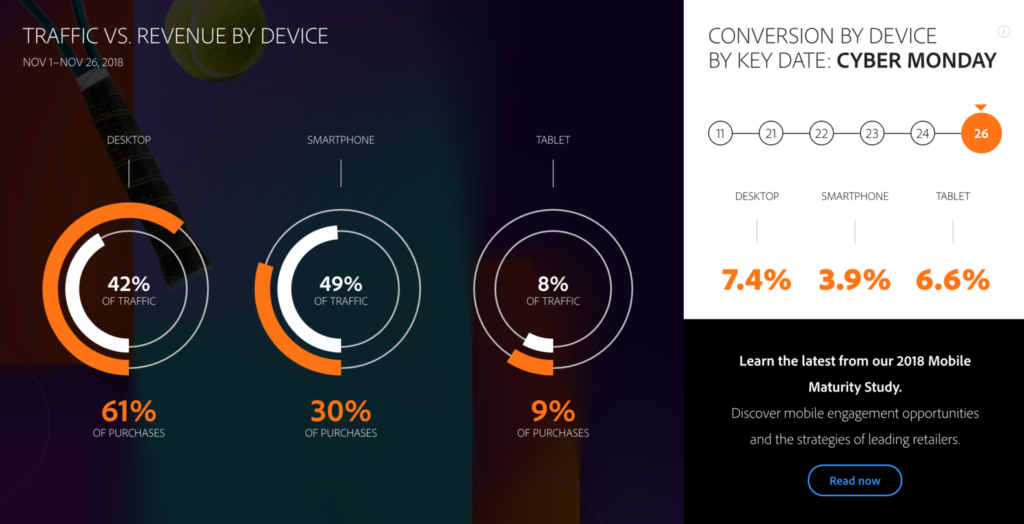
by Jose Suarez | Nov 23, 2022 | System Integrations
Many merchants have been gearing up for the holidays for months, and the time for Black Friday and Cyber Monday rushes is upon us. These merchants have to deal with many roadblocks and headaches along the way, like return scams and the like. Unfortunately, the abuse doesn’t stop at your return policy… With the holiday season in full effect, killer customers are on high alert and merchants should be too, considering record numbers for online shopping are expected this year, 166.3 million shoppers are expected to buy online just this Black Friday and Cyber Monday weekend. We teamed up with our fraud prevention partner Signifyd and the team at ShipStation to help online merchants stand clear of the 3 most common shipping scams killing eCommerce business profits this year.
1. Package Rerouting

Package rerouting commonly occurs when a customer commits payment fraud and uses a stolen credit card to make an online purchase. In most cases, the transaction is cleared because the legitimate cardholder’s address is used without being flagged. However, once the customer receives shipping confirmation and the package is en route, the original address is changed.
In another case, the customer purposely provides a false shipping address and monitors the package through the online tracking information given upon confirmation. Once they’re notified that the package is undeliverable, the customer contacts the shipping company to provide a new delivery address. Unfortunately for merchants, additional fees may occur when the package is successfully rerouted.
Lastly, a customer can make an online order and after confirmation, call the merchant to ask if their preferred shipping service can be used. Most likely, these customers have an established relationship with outside shipping services and are confident about receiving shipped items unflagged, making it harder to track and prove the package was ever delivered.
In all three cases, by the time the legitimate cardholder notices the unauthorized purchase, the scammer’s already enjoying their products free of charge. These types of fraud leave the online business with losses up to $10,000 in shipping fees, lost product, and lost profit… so now what?
Preventing Package Rerouting
Solving this issue requires a multi-step approach. First, it’s important to note not all customers have malicious agendas. In fact, many may have good reason to reroute a package. To avoid upsetting or offending legitimate customers, merchants should start with a clear shipping policy stating there’s a zero-tolerance for package rerouting on their website, social media profiles, and email confirmation.
Creating detailed shipping terms and conditions that address various errors that arise during shipping is important when dealing with customer claims. One major way to gain clarity into issues is to offer tracking. Tracking lets you know that an item has been delivered.
-Jennifer Ruben, Partner Marketing Manager, ShipSation.
In addition to providing these details, make sure a customer’s zip code and address are validated before shipping. Lastly, be sure to ship only to the original address provided in the confirmation details, especially for a large order.
2. Item Not Received
by Mike Cassidy at Signifyd

One of the most insidious shipping scams occurs when the item marked ‘not received’ actually was received. False INR claims cost retailers millions every year, but they also cost merchants their reputation. Once word’s out that a retailer tends to give in to INR claims, be it via social media, dark web forums, or even a legitimate publisher, similar claims will flood in.
The scam is popular because it’s easy. No need to commit online identity theft by stealing someone’s personal information, or hack into a customer’s retail account. All abusive customers need is the will to cheat the system without care.
To put it simply, scammers accomplish this by ordering a product, bringing the product into their homes, and then telling their credit card companies their orders never arrived. Such claims create one of the thorniest situations in the retailer/customer relationship.
If the retailer challenges an item-not-received claim and it’s legitimate, chances are the retailer just lost a customer for good. Signifyd’s consumer survey, conducted by market research firm Survata, found that nearly half of consumers will endure no more than one bad experience before abandoning a retailer for good. Let’s agree that being called a thief by a retailer counts as a bad experience.
On the other hand, if a retailer accepts the INR claim and it’s not true, the merchant is out of the goods and the revenue it would have received. You can up your fraud protection game, by adding a few things to your to-do list.
Preventing INR Claims
The first step is to make sure your return policy is clear, and that your return process is easy. You also want to be clear in your descriptions and presentations of the products you’re selling. Not only does this provide your customers with a better shopping experience, but it also reduces the possibility they’ll be unpleasantly surprised when their order arrives.
Some consumers become frustrated with the work required to return a product and decide to get a refund by claiming the product never came. Being clear about returns and the products you’re selling helps reduce the incidence of unhappy customers who suddenly feel entitled to game the system.
There are also ways to challenge an INR claim, of course. Finding photos on social media of a customer with a product they claimed they never received, for instance, is fairly strong evidence that the item was received — as is a customer’s signature accepting the order. (It happens.)
Dealing with INR claims will never be pleasant, but with some forethought, it can become much less of a chore.
3. Hijacked Shipping Accounts

Nothing’s off-limits when it comes to fraudsters, not even shipping accounts. If your company’s shipping account is online or accessible to the public, you should keep reading.
Hijacking shipping accounts is a free and undetectable way to use a stolen shipping account number to make large shipments. Once these account numbers can be accessed, they are often used in the same manner as stolen credit cards and become can punch your profits in the gut.
In less severe cases, employees use their company’s account number to ship personal packages from time to time. In the worst case, these stolen accounts are used to ship drugs, stolen goods, or fake checks long distances, sometimes across the country.
Take Montana State University for example, in 2010 the school had a $180,000 pile-up in fraudulent shipping costs after more than 9,000 consumers received fake checks. Fake checks are normally used to trick recipients into wiring money for a small fee.
Businesses of all sizes are easy targets, as their shipping bills typically aren’t monitored close enough. However, with little knowledge of who’s accessing your account, it becomes harder to track down the culprit.
Preventing Hijacked Shipping Accounts
In order to properly prevent hijacked shipping account numbers, there must be a central management system that includes these features:
- Make account numbers accessible only to specific and trustworthy employees. Remember, less is more.
- Implement a reporting system that allows these users to be able to regularly schedule pickups and track packages, without constant authorization needed.
- Monitor frequently. With a tracking system in place, data can be used to track users’ activity for cross-reference purposes.
Final Thoughts
Tracking down evidence of fraud (be it wire fraud or shipping) takes time and not many merchants want to get into the business of becoming Sherlock Holmes. However, without proper detective work, shipping scams can be a legitimate threat to merchants, their customers, their reputation, and their profits. Luckily, there are fraud-protecting and chargeback-management solutions that highly automate the INR dispute process and some also eliminate the merchant’s risk. Ask us more about INR Protection here.
Subscribe to our newsletter to ensure you never miss B2B eCommerce insights, trends, and new technology from our team. Don’t forget to follow us on Twitter, Linkedin, Instagram, and Facebook too!

by Don Pingaro | Sep 21, 2019 | Commerce Strategy, System Integrations
Congratulations! You survived the Back to School retail surge. While the true test of eCommerce performance is yet to come, any hurdles you encountered during Back to School should be taken care of well before then. Consider these your warning shots. To help, here are 3 precautionary measures you can take to digitally strengthen your store for the holidays.
1. Stress Test to Avoid Lost Revenue
A wave of more than 6.2 billion shoppers will descend on digital retailers during Cyber Week. Unfortunately, not all businesses are prepared for success…
For example, J. Crew’s site crashed on Black Friday in 2018 and issues persisted throughout the afternoon. Analysts predict the outage cost the company around $780,000 in just five hours. Shoppers flocked to Twitter to complain en masse, causing a firestorm of anger to erupt across the web. This is where the real damage was done. Like a ghost story from holidays past, this is a warning for retailers everywhere to change for the better.

Redstage’s CEO Adam Morris identified the top “holiday rush” issues we’ve helped clients through in years past. Here’s what to watch out for:
1. Slow Site Speed
2. Price Caching
3. Broken or Buggy Checkout
4. Server Overload or Timeout
5. Add to Cart Features Failing
“The holidays are a time of increased profits, but that comes with a huge load on websites,” Morris says, “So if you haven’t done proper stress testing to account for higher demand, you won’t know how your online store is going to react.”Adam Morris, CEO at Redstage
Preparing for the worst now can save you money and your reputation later with one simple step— testing. Skipping this step could spell disaster that leaves the specter of poor service hanging over your reputation for years to come.

2. Your Back-End Checklist at Present
From Thanksgiving to Black Friday through the end of Cyber Week, retailers have a few critical days to rake in as many sales as possible. During this shopping frenzy customers both in-store and online. Regardless of how they buy, your online store (or your app) will more than likely be their first stop. We developed a checklist of what you can do today to ensure your eCommerce site survives Cyber Week.
- Optimize your site’s user experience with A/B testing.
- Check your indexing to avoid price caching.
- Review all error codes to avoid a broken checkout.
- Avoid overload and crashes by scaling your server.
- Double-check key functions to avoid important features failing.
- Complete load testing to prepare for an increase in traffic.
- Utilize an automated monitoring system for real-time updates on 404s and checkout errors.
- Upgrade your payments and security platforms to prevent payment fraud.
- Lastly, be prepared to scale up your support team on the fly. If something goes wrong, even for a few minutes, you’ll need a sizable support team to manage angry customers and correct the issues.
“If you’re not using visitor data to identify the friction points in your checkout, you risk focusing your budget in the wrong places. A data-driven approach to optimization means trusting your analytics even when the message is counter-intuitive.”Oliver Sosinsky, Sr. Solutions Engineer at Redstage
Learn a valuable lesson from LuLu Lemon. Last year, the athleisure brand’s site went down the morning of Thanksgiving Day. Shopper outrage hit Twitter at 8am EST with a “Site is down. Ugh!”
In the first minutes of the shopping event of the year, the brand was stuck, entangled in crisis. Once the site got back online, more errors appeared, causing sales prices for in-cart items reset to regular prices or prevent customers from checking out.
With proper bug monitoring and back-end preparations, this fiasco could have been avoided. Take a page out of our book and start monitoring now. You’ve done the legwork to bring customers to your site, now protect it.

3. Capitalize on the Future
A single visitor doesn’t guarantee a transaction and a single transaction doesn’t guarantee a loyal customer. Flawless mobile experiences will do both, but takes some serious testing.
Conversion rate optimization turns your visitors into customers while ensuring they receive an immaculate customer experience. While no two customers are the same, simple tests can lead to enhancements that remove friction from the checkout and dramatically reduce abandoned carts.
Merchants like LawnmowerTirestore.com took advantage of testing their site before the holiday season and the results were a game changer. By making their checkout button stick to the site’s header and follow users while they scrolled, sales soared with a 29.5% increase in revenue per visitor (RPV) for desktop customers. For mobile, the test yielded a 7% increase in RPV, after only 4 weeks of testing. Now, Lawnmower Tirestore plans to roll-out the feature site-wide to capitalize on their new-found data-driven advantage.
As part of the Mobile Optimization Initiative, retailers can receive checkout tests 100% free. The goal of the initiative is to create a set of best practices for mobile optimization and share our insight with the world. Read more about the initiative here.

Final Thoughts
According to Internet Retailer, 60% of consumers plan to spend 50% or more of their holiday shopping online; spending over $21.6 billion during Cyber week.
It is not too late to prepare. If you start early enough and cover all the bases, you can sit back, relax and watch your revenue grow with measurably less stress. Remember, this is your holiday too. While there’s still time, monitor your site for bugs, load test, A/B test, utilize the data, capitalize on those results, and enjoy some eggnog.
Cheers!

by Latoya Young | Sep 17, 2019 | Commerce Strategy, System Integrations, Web Development
No matter what, customers are always right. Today, they have more power than ever before. As you are well aware, it’s much more likely that your online customers interact with your website via smartphone than desktop. Therefore, their experiences need to be personalized, fast, efficient, and tailored for specific devices. If not, they’ll bounce to the next competitor for a better experience.
Statistics show that 40 percent of users will switch to your competitors after a bad mobile experience. A risk ALL merchants should avoid, especially with the stark rise in mobile sales. In fact, analysts predict that by 2020, 44.7 percent of all retail eCommerce sales will be generated through mobile devices.
Remember, your customers won’t stand for mediocre customer experiences. Your only job is to push them through the checkout in the most frictionless (and secure) manner possible.The digital experience should always mimic the desktop. A business buyer wants to be able to access or check inventory the same way during a commute or at an office computer. According to a 2018 Cyber Week report by Invesp, 32% of consumers changed their mind about making a purchase on mobile, abandoning carts packed with unsold products or sercives. It’s time for a change.
Why 2018’s mobile experiences left money on the table.
Last year, Black Friday’s sales turnout beat expectations by more than 10 percent. However, while many attempted to manage an anticipated mobile surge, conversion rates on the “favorite” shopping device came in dead last during Cyber Week. In the end, over $6.2 billion was spent online from Thanksgiving to the end of Cyber Monday. Mobile orders only accounted for 45% of sales. When you consider that mobile’s share of traffic was 62%, that’s a pretty weak conversion rate.
“In a world where responsive design is trying to give [customers] all the same functionality we have on desktop in mobile, there may be a divergence here where we have to start thinking about different mobile-first customer experiences.”
– Adam Morris, CEO, Redstage
Merchants and B2B companies who don’t start thinking with a “mobile-first customer experience” mentality will be left behind. Of course, it’s ideal to know and understand the buying habits of each customer, but tricky to do without the right technology. Thankfully, free data-driven A/B testing provided by the Mobile Optimization Initiative can help you overcome these barriers. Your customers aren’t going to wait for better mobile experiences, so why should you? Customers want to “click and go.” Lucky for you, implementing optimization is not only easy but the best option for B2B companies and retailers. B2B companies have a more complicated sales funnel that tends to increase aggravation and cart abandoment by 26%. With the Mobile Optimization Initiative, merchants can increase completed purchases dramatically by improving customers’ mobile experience with simple tweaks. Here’s how it works.
The Mobile Optimization Initiative is the ultimate holiday tool!
Last year, we published several articles about mobile optimization to help merchants close the “mobile revenue gap” by optimizing checkout experiences. With some of the tests we’ve run, retailers can cut mobile cart abandonment in half or more on certain devices.
“Optimizing your customer experience thorough data-driven optimization allows you to discover small tweaks that ensure you’re capturing as many sales as possible from the growing pool of mobile buyers.“
– Benjamin Shapiro, Solutions Engineer, Redstage
Those who join the MOI program with Redstage will receive a free checkout funnel assessment, custom test design, experiment implementation, and professional services during the active program. The goal of our global initiative is to help merchants get more revenue from mobile. In turn for the free services, we gather anonymized data about customer habits to create a knowledge-base for best practices in mobile. Learn more about our community proven experiments and sign up here. As the results show, it’s well worth it.
“With the current data collection and analysis tools available, we no longer have to speculate on where to put efforts to improve your site. The data is the guide in both where to focus your efforts, and where to expand after experimenting. Smart A/B testing based on data-driven analysis gives you insights that lead to successful, simple changes that can have a big impact on increasing your revenue per visitor. One recent participant – A lawn mower tire store – saw lifts of 24.9% and 7% RPV on desktop and mobile respectively through a‘sticky cart’ test.“
–Benjamin Shapiro, Solutions Engineer, Redstage
How Soon Should You Start?
The sooner you begin, the better. Participants start gathering testing data immediately, and all it takes is adding a simple tracking tag to your site (less than a minute). If you’re looking for a last-minute boost for your holiday marketing, this is it, and it packs a punch. Our latest test yielded a 25% increase in revenue per visitor.
The Mobile Optimization Initiative puts you ahead of the competition, because the experiments are proven, having been tested over millions of transactions across hundreds of merchant sites.As of December of 2018, experiments from 120 merchant sites generated a collective $22 million in revenue, averaging a 9.28% increase in RPV (extra revenue they would’ve missed without MOI testing). Today, we leverage the data from more than 200 participating merchants to ensure your tests are optimized for success. From this, we’ve created more than 130 standardized experiments to test, so now’s the time to join!
“We were struggling with mobile conversions and the MOI program helped us with the insights and adjustments we needed. This data-driven, forward-thinking program is certainly worth a try.”
– Digital Marketing Coordinator @ Lawnmower Tire Store
Final Thoughts:
Ignoring the trends means you’re missing out on your share of over $500 billion in online sales. With 95% of mobile devices being used to look up local information to visit businesses, it’s your business they should be checking out (pun intended). By this time next year, we expect the number of participants in the MOI to double again, which means it may be too late to get a leg-up on your competitors. Since the experiments work best during high-traffic periods, there’s no better time to test! And don’t worry, the tests automatically notify you if they’re not giving you positive results.
If you’re still not convinced, or don’t know where to start, check out the latest results, case studies, and strategies in our new Holiday Mobile Optimization Ebook here! Good luck this holiday season! Want to learn more about the initiative but before you sign up? Contact us here for a free consultation with our testing experts.

by Don Pingaro | Nov 28, 2018 | Commerce Strategy
At this very moment, retail executives around the US are likely screaming about their Black Friday and Cyber Monday sales performance. For some, these sounds resemble a triumphant war chant, for others, these are the shrill cries of defeat. The reason? Mobile-first adoption.
No matter where you stand, this data changes the eCommerce landscape. Here are the latest stats and key trends from the long-weekend of holiday sales events. We will update this article as soon as new data is released, so make sure you subscribe to be the first to know!
Thanksgiving Takes an Extra Helping
On Thanksgiving day, as of 7:00am Pacific Time, U.S. consumers spent $406 million. By 2pm, Adobe announced that this number skyrocketed to a whopping $1.75 billion, representing a 23% increase over sales in the same time period in 2017. By the end of the day, Americans beat out last year’s sales for the day by a shocking 28%, resulting in a shocking 3.7 billion dollar Thanksgiving. Adobe initially projected a $3.1B bottom line for the holiday.
Mobile Wins Big
Here’s a quick breakdown of the major events in bite-size chunks:
Thanksgiving Day
Black Friday
$2.1 billion or 33.5% of sales came from smartphones this Black Friday. Another 10% of sales, or roughly $627 million, came from tablet users. All in all, the day yielded an impressive $6.2 billion, a 23.6% increase over 2018.
Cyber Monday Breaks The Internet
Here’s the big one. Cyber Monday sales shattered all previous records for online sales… in U.S. history.
“Cyber Monday [topped] $7.9 billion by the end of the day, making it the largest online shopping day of all time in the U.S. This represents a 19.7 percent increase year-over-year (YoY) as of 7:00 p.m. ET. In comparison, Thanksgiving Day and Black Friday brought in $3.7 billion (28 percent growth YoY) and $6.2 billion (23.6 percent growth YoY) in revenue, respectively.”
BusinessWireHere’s the share of devices (as of ~1:30pm ET November 27, 2018):
 See more live stats at ExploreAdobe.com
See more live stats at ExploreAdobe.com
7 Days of Spectacular Sales
Additionally, Adobe’s latest report notes that this November has seen 7 days where total sales broke the $2 billion mark (as of Nov. 28, 2018)… Thanks in no small part to the mobile sales spikes.
Omnichannel Adoption Drives Sales
The trend of “buy online, pick-up in-store (BOPIS)” continued, with the trend growing 50% during this past weekend over 2018. According to Adobe, this spells dollar signs for omnichannel merchants: “As the online and offline retail experience continues to blend, retailers with physical stores drove 28 percent higher conversions online.” While this trend helped retailers increase their share of online earnings, in-store sales lagged far behind.
It’s time to join the mobile-first movement. As Adam Morris, Redstage CEO notes, “Cusotmers are no longer expecting an in-store Black Friday and Cyber Monday, but instead, an omnichannel experience.” While many retailers successfully ramped up their omnichannel strategies for this holiday, the data shows this trend is here to stay, and more work is needed.
If you want to reduce mobile checkout friction before the holidays are over, contact us asap! To see the results we’ve achieved with our recently launched Magento Community Initiative, find the latest data here.
Final Thoughts
These extravagant stats spell success for an industry racing to close the mcommerce gap. It’s seems the industry is all-aboard the mobile-first customer experience wave. As Internet Retailing points out, retailers may have finally reached ‘always-on‘ mobile consumers. Now it looks like the key areas for improvement are streamlining mobile checkouts, and optimizing omnichannel experiences.
Update Nov. 28, 2018
Black Friday + Cyber Monday Stats You Need To Know
Here’s a breakdown of YOY holiday sales by device and region based on data collected by our partners at Nosto!
-
- United States
Desktop: 39% (2017) / 34% (2018)
Mobile: 56% (2017) / 61% (2018)
Tablet: 5% (2017) / 3% (2018)
-
- United Kingdom
Desktop: 47% (2017) / 40% (2018)
Mobile: 42% (2017) / 48% (2018)
Tablet: 11% (2017) / 12% (2018)
-
- Northern Europe
Desktop: 39% (2017) / 37% (2018)
Mobile: 51% (2017) / 57% (2018)
Tablet: 10% (2017) 6% (2018)
-
-
- France
Desktop: 69% (2017) / 67% (2018)
Mobile: 19% (2017) / 22% (2018)
Tablet: 12% (2017) / 11% (2018)
- DACH
Desktop: 40% (2017) / 53% (2018)
Mobile: 42% (2017) / 39% (2018)
Tablet: 8% (2017) / 8% (2018)
Update Nov. 29, 2018
PayPal Mobile Payments Get A $2B Holiday Boost
-
- For the first time in PayPal history, mobile payment volume topped $1 billion, and did so on both Black Friday (November 23) and Cyber Monday (November 26). – PAYMNTS
-
- Adobe reports U.S. shopping carts averaged $138.00 during Cyber Monday, a 6% bump over last year.
-
- 49% of Black Friday traffic came from smartphones, driving 30% of online sales.
- “In the [PYMNTS] Checkout Conversion Index report, the 30 merchants with the fastest, most streamlined online checkouts ranked well. Conversely, the 30 merchants with the lowest scores offer a widely inconsistent checkout experience…”
Update Nov. 30, 2018
Cyberweek 2018 Trends Report
Our partners at BigCommerce identified a few additional trends in their Cyberweek 2018 Trends Report. Key findings include:
-
-
- While online stores continue to have the highest AOV for any sales channel, Facebook took second place, accounting for “70% of total GMV” for Fashion and Jewelry brands using the channel. Home and Garden brands selling on Facebook came in at 16% GMV.
- “The Fashion & Jewelry and Toys & Games verticals saw the highest GMV increases over 2017.

by Don Pingaro | Nov 21, 2018 | Commerce Strategy, System Integrations
The 2017 holiday rush was a tipping point for eCommerce optimization. Between mobile sales taking over traditional retail and other trends that took the industry by surprise, the holidays gave retailers myriad reasons to rethink digital strategy. Today, with Black Friday looming only days away, 2018 stands to be another make-or-break point for online sellers who did or didn’t adapt.
Our partners at Shoppimon put together this list of last-minute reminders for retailers prepping for the big week of sales ahead. Dive in to discover the top recommendations for managing traffic, guaranteeing uptime, and perfecting conversion optimization that just might save your store this season.
#1. Test the full sales funnel – from landing page to checkout.

The full sales funnel should be tested and optimized leading up to –and throughout– the holiday season. However, some key points of weakness that lead to significant business downtime are:
1. Search: 0.7% of all issues Shoppimon sees are problems with search. When search isn’t working on a website and shoppers can’t find what they’re looking for, it’s all too easy today to buy elsewhere.
2. Page Errors: Exposed error messages are surprisingly common. In fact, they’re responsible for 0.6% of all issues Shoppimon identifies. These pose a problem for several reasons. The first is that they stop the shopping process dead in its tracks. As a result, they also scare shoppers off. Not only are customer unable to complete a purchase, but after seeing an error message, they may lose all trust in the site going forward. Lastly, depending on the error, exposed messages can pose a serious security risk to a website… Ensuring these types of message don’t happen should be a top priority.
3. Error Message Text: To cover all your bases, make sure the language in your error messages is friendly and less automatic. This will let the customer know you are aware a problem is occurring, and that it may be fixed soon. “Error 506!” sounds a lot worse than “Hey there! We are experiencing a slight issue due to heavy site traffic. Check back in 15 minutes and the problem should be resolved. Happy holidays!”
4. Missing Product Images: If a shopper can’t see a product, they won’t buy it, end of story. Missing product images are surprisingly common. In fact, they make up 2.1% of all issues we spot. Understanding when this happens and fixing it before you lose a sale is a must. Monitoring your site will help keep you aware and in the know about missing product images and info.
5. Add to Cart & Checkout Errors: You are likely losing 4% or more of your total sales to issues occurring in these two key shopping stages. Issues here range from missing add to cart buttons to problems with payment providers. The average retailer will lose approximately 13% of sales to functional and performance-related website issues during the holidays. To avoid this, thoroughly test your conversion funnel and upgrade your website in advance of the seasonal surge. It can make a significant difference to your bottom line. If you’re out of time for a significant upgrade, monitoring your site closely and proactively address issues as they occur. It will have a dramatic and positive impact on your bottom line.
#2. Stress-test your site’s ability to handle increased traffic.

Under enough stress, every system will fail. Stress-testing your website before the holidays is a great way to find out if additional traffic could be your downfall. Leading up to Black Friday, we recommend you do both of the following:
1. Load Testing: making sure that your site can handle a given number of users/requests consecutively and concurrently.
2. Completing A True Stress Test: load the site to the point that it crashes to see how that crash is handled by your software (and potentially, your team).
When a site is overloaded, if a server is properly configured, it should be able to handle the benchmarked number of consecutive or concurrent requests, after which requests will be queued. If you then pass the benchmark for you queuing, requests should time out, rather than the site itself going down completely.
If your server does crash, splitting the load across other third party solutions like CDNs will help in the long run, so the servers don’t need to handle each and every request. However, if you need a last minute fix you can quickly tune the configuration of your servers to change the amount of memory they use. You may also be able to manage the number of requests they handle (assuming your code has been built to allows this).
#3. Be prepared to scale-up on the fly (and know how to).

The first thing an eCommerce manager should do is simply talk to their team. Understand what is already in place and what it would take to scale-up their web and database servers if needed. In an ideal situation, when a website is on a cloud platform, you should have deployment automation that allows you to quickly spawn more servers (which should only take a couple of minutes to complete). This does however require that automation is already in place to allow you to do this, and that the code was written in a way to support the expansion to additional hardware. And this is true not only of web servers, but database servers as well.
In a typical eCommerce setup, the biggest bottleneck is the database, which also tends to be the hardest to scale in an emergency situation. With limited time to prepare before Black Friday and Cybyer Monday, your top priority should be to check if your database hardware can scale if necessary. This is critical. If the situation arises where the database needs to be scaled and it wasn’t prepped in advance, it will usually result in significant downtime for the full site.
Going deeper into the issue, Redstage CEO Adam Morris states, “…when downtime occurs, or things do go wrong during the holidays, the effect of those issues is compounded because you’ve probably expanded your customer service team to make up for higher demand, as well as increased marketing budgets to attract more holiday spending. So when things go wrong, those marketing dollars are lost, and [customer] support may suddenly be relegated to a more junior team with less experience and a lower quality of service.” (Check out more insights on holiday emergency management from Adam Morris here on Shoppimon’s blog).
#4. Find problems before your customers do.

At Shoppimon, we see retailers monitoring their websites in a multitude of different ways; From manual checks conducted by different team members, to using completely automated systems like Shoppimon, and everything in between. Unfortunately, many of the systems require resource-heavy investments, not just for setup, but also to understand them and react to the data they generate.
While we know that monitoring automation is key for any business at scale, it’s important that a team’s resources spend as little time as possible on the monitoring itself. Instead, team members should be free to spend their time making a website or application better, fixing bugs, and creating a great customer experience.
Luckily, Shoppimon supports script-free and integration-free automated setup, which takes minutes. The solution also automates issue prioritization and notification, so users get critical information when it’s most needed, but never bothers them when it’s not.
These benefits have made a huge difference for our customers leading up to the holiday season. We’ve seen brands successfully roll out new updates and upgrades just before the sales surge, and also helped them identify better ways to plan for next year.
Each year we see the biggest challenges and successes of major brands in the eCommerce Industry. Last year, in our Online Store Health & Usability Index (OSHU Index), we saw brands like Birchbox, Dollar Shave Club and Saatva excel during the holiday season, with consistently faster load times and fewer issues both leading up to and during the holidays. However, we saw other retailers, like One King’s Lane, that experienced significant downtime during Cyber Monday, really struggle. The difference relies on your ability to react.
Final Thoughts:
Monitoring your online store for bugs and the ability to react quickly will determine the winners and losers for 2018. Testing is paramount (especially if you had issues last year), which means diving into your funnels, your site, and being prepared to tackle anything that needs fixing, fast. However, without a monitoring solution in place, you might not notice significant issues on your site causing lost revenue every minute. Do your due diligence and walk through each stage of the customer journey to make sure your holiday haul will be a happy one. Let us know what you think of these tips in the comments below, and enjoy the holidays!
For more insights on last-minute holiday strategies, check out this post from our partners at Brightpearl on omnichannel & backoffice prep!

















Recent Comments